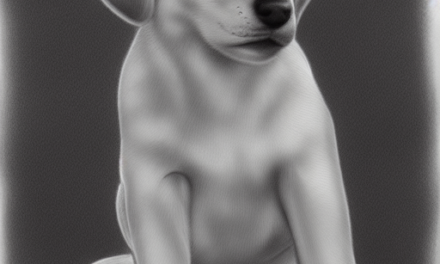Key Takeaways
- Family Compatibility: German Shorthaired Pointers (GSPs) thrive in active households and are affectionate companions, making them suitable family pets.
- Training and Socialization: Early training and socialization are crucial for developing a well-behaved GSP, enhancing their adaptability and reducing behavioral issues.
- Exercise Needs: GSPs require at least 1-2 hours of vigorous exercise daily to maintain their physical and mental health, preventing destructive behaviors.
- Cost of Ownership: The initial cost of a GSP puppy ranges from $600 to $2,500, with ongoing expenses for training, food, and healthcare to consider.
- Potential Challenges: GSPs may exhibit high prey drive and separation anxiety; consistent training and companionship are essential to manage these traits.
- Living Conditions: GSPs are adaptable but do best in homes with space for exercise; a secure yard is ideal for their energetic nature.
Welcome to our comprehensive guide on GSP dogs, where we delve into everything you need to know about the beloved German Shorthaired Pointer. If you’re considering adding a GSP to your family, you may wonder about their temperament and compatibility as family pets. In this article, we will explore key aspects such as the temperament of GSPs, their costs, and essential care insights. We’ll also discuss the history of the breed, including what two breeds contribute to the unique characteristics of the German Shorthaired Pointer. Additionally, we will address common concerns like aggression, shedding, and the challenges of owning a GSP. Whether you’re looking for GSP puppies for sale or tips on training your German Shorthaired Pointer, this article is designed to provide valuable insights for both prospective and current owners. Join us as we uncover the many facets of this energetic and affectionate breed!
Overview of GSP Temperament
German Shorthaired Pointers (GSPs) can be excellent family dogs, but their suitability largely depends on the family’s lifestyle and ability to meet the dog’s needs. Here are key considerations:
- Affectionate and Loyal: GSPs are known for their strong bonds with family members. Their affectionate and playful nature makes them great companions, often seeking to be involved in family activities.
- Intelligent and Trainable: These dogs are highly intelligent and eager to please, which makes training relatively easy. Consistent, positive reinforcement methods work best, and early socialization is crucial for developing a well-rounded dog.
- Active and Energetic: GSPs require substantial exercise—ideally, at least 1-2 hours of vigorous activity daily. They thrive in active households that enjoy outdoor pursuits such as hiking, running, or swimming. Engaging in these activities can help prevent behavioral issues stemming from boredom.
- Good with Children (with proper training): While GSPs are generally good with children, their high energy levels can be overwhelming for very young kids. The American Kennel Club emphasizes the importance of teaching children how to interact with dogs safely and respectfully.
- High Energy Needs: Without sufficient physical and mental stimulation, GSPs may exhibit destructive behaviors. Providing interactive toys and engaging in training exercises can help channel their energy positively.
- Potential for Destructive Behavior: If left alone for long periods or not exercised adequately, GSPs may chew furniture or dig. Establishing a routine that includes regular exercise and mental challenges is essential.
- Hunting Instincts: GSPs have strong hunting instincts, which may lead them to chase small animals. Early socialization and training can mitigate this tendency, ensuring they can coexist peacefully with other pets.
- Separation Anxiety: GSPs can be prone to separation anxiety if left alone for extended periods. Gradual desensitization to alone time and providing a safe space can help alleviate this issue.
In summary, GSPs can be wonderful family dogs for active families who can provide the necessary exercise, training, and socialization. Their loyalty and affectionate nature make them a great addition, provided their needs are met. For more information on dog training and behavior, resources such as the American Kennel Club and veterinary behaviorists can offer valuable insights.
Family Compatibility of German Shorthaired Pointers
When considering a German Shorthaired Pointer for your family, it’s essential to evaluate how well they fit into your household dynamics. Here are some factors to consider:
- Active Lifestyle: GSPs are best suited for families that lead an active lifestyle. They thrive on physical activity and require regular exercise to stay happy and healthy. Families who enjoy outdoor activities will find a loyal companion in a GSP.
- Socialization and Training: Early socialization and consistent training are vital for GSPs. They are intelligent and eager to learn, making them responsive to training. Engaging them in obedience classes can enhance their behavior and strengthen the bond with family members.
- Compatibility with Other Pets: GSPs can coexist with other pets if properly socialized. However, their strong hunting instincts may lead them to chase smaller animals. Introducing them to other pets gradually and under supervision can help foster a peaceful environment.
- Time Commitment: GSPs require significant time and attention. Families must be prepared to dedicate time to exercise, training, and companionship. If left alone for long periods, they may develop behavioral issues.
In conclusion, German Shorthaired Pointers can be a fantastic addition to active families that can meet their exercise and socialization needs. Their affectionate nature and loyalty make them a beloved family member, provided they receive the attention and care they require.

How much does a GSP puppy cost?
The cost of a German Shorthaired Pointer (GSP) puppy typically ranges from $600 to $2,500 USD. Several factors influence this price, including:
- Breeder Reputation: Established breeders with a history of producing healthy, well-socialized puppies often charge higher prices due to their commitment to quality and ethical breeding practices.
- Location: Prices can vary significantly based on geographic location. Urban areas may see higher costs due to demand, while rural areas might offer lower prices.
- Bloodline and Pedigree: Puppies from champion bloodlines or those with a strong pedigree may command higher prices. These dogs are often bred for specific traits, including temperament and physical characteristics.
- Health Testing: Reputable breeders conduct health screenings for common genetic issues in GSPs, such as hip dysplasia and eye disorders. The costs associated with these tests can be reflected in the puppy’s price.
- Age and Availability: Younger puppies may be more expensive, while older puppies or those in need of rehoming might be available at a lower cost.
- Additional Costs: Beyond the initial purchase price, prospective owners should consider ongoing expenses such as vaccinations, training, food, and veterinary care, which can add significantly to the overall cost of ownership.
For more detailed insights into responsible pet ownership and training, resources such as the American Kennel Club (AKC) and the Association of Professional Dog Trainers (APDT) provide valuable information.
Factors Influencing GSP Puppy Costs
Understanding the various factors that influence the cost of GSP puppies can help potential owners make informed decisions. Here are some key considerations:
- Breeder Quality: Choosing a reputable breeder is crucial. Look for breeders who prioritize health testing and socialization, as this can impact the long-term health and behavior of your German Shorthaired Pointer.
- Market Demand: The popularity of GSPs can affect pricing. In areas where these dogs are highly sought after, prices may be elevated.
- Seasonality: Puppy prices can fluctuate based on the time of year. Breeding seasons may lead to increased availability and potentially lower prices.
- Training and Socialization: Puppies that have received early training and socialization may be priced higher, reflecting the additional investment made by the breeder.
By considering these factors, you can better understand the German Shorthaired Pointer resources available and make a choice that aligns with your budget and lifestyle.
What Two Breeds Make a GSP?
The German Shorthaired Pointer (GSP) is a versatile hunting dog that originated from a combination of several breeds. The primary breeds that contributed to the development of the GSP are:
- Old Spanish Pointer: This breed is known for its excellent scenting ability and was historically used for hunting game birds. Its influence on the GSP is evident in the breed’s keen nose and tracking skills.
- Old German Pointer: Another significant contributor, this breed was bred for versatility in hunting, excelling in both pointing and retrieving. The Old German Pointer’s traits have been integral in shaping the GSP’s athleticism and adaptability in various hunting environments.
Additionally, the Braque Français, a French pointing dog, also played a role in the GSP’s lineage, enhancing its pointing abilities and overall temperament.
The GSP was developed in Germany during the 19th century, with the aim of creating a dog that could perform multiple tasks, including hunting, retrieving, and companionship. This breed is celebrated for its intelligence, energy, and loyalty, making it a favorite among hunters and families alike. For more detailed insights into the breed’s history and characteristics, refer to resources such as the American Kennel Club.
Breeds Contributing to GSP Characteristics
The unique characteristics of the German Shorthaired Pointer stem from its diverse ancestry. Each breed that contributed to the GSP has imparted specific traits that define its personality and abilities:
- Intelligence and Trainability: The GSP is known for its quick learning ability, a trait inherited from both the Old Spanish Pointer and the Old German Pointer. This makes training a GSP puppy an enjoyable experience, as they respond well to commands and enjoy learning new skills.
- Versatility: The combination of hunting instincts from its ancestors allows the GSP to excel in various roles, from being a family companion to a skilled hunting partner. This adaptability is a hallmark of the breed, making it suitable for different lifestyles.
Understanding these characteristics can help potential owners appreciate the GSP’s needs and strengths, ensuring a fulfilling relationship with their GSP dog. For those interested in bringing a GSP into their home, exploring adoption options or finding supplies tailored for this breed can enhance the experience.
Can GSP Be Aggressive?
German Shorthaired Pointers (GSPs) can exhibit aggressive behaviors under certain circumstances. Understanding these factors is crucial for responsible ownership and training.
- Breed-Specific Tendencies: GSPs possess a strong prey drive, which can lead to aggression towards smaller animals, such as cats or rabbits. This instinct is rooted in their history as hunting dogs, where chasing and capturing prey was essential.
- Training and Socialization: Lack of proper training and socialization can result in reactive behaviors. Without exposure to various environments, people, and other animals, GSPs may not learn appropriate social interactions, leading to fear-based aggression.
- Inconsistent Leadership: Dogs thrive on structure and clear leadership. If a GSP perceives its owner as inconsistent or weak, it may attempt to assert dominance, resulting in aggressive behaviors. Establishing a consistent routine and clear boundaries is vital.
- Underlying Medical Issues: Health problems, such as pain or neurological disorders, can influence a dog’s temperament. A thorough veterinary evaluation is essential to rule out any medical conditions that may contribute to aggressive behavior.
- Environmental Factors: Stressful situations, such as loud noises or unfamiliar surroundings, can trigger aggression. GSPs may react defensively if they feel threatened or anxious.
- Dog-to-Dog Aggression: GSPs may display aggression towards other dogs, particularly same-sex dogs. This can manifest as growling, snapping, or biting, often stemming from territorial instincts or fear.
- Reactivity to Strangers: Some GSPs may bark, lunge, or show signs of aggression when approached by unfamiliar people. Early socialization can mitigate these reactions.
- Resource Guarding: GSPs may guard food, toys, or even their owners, leading to growling or snapping if they perceive a threat to their resources.
- Dominance Behavior: Aggressive displays can occur when a GSP attempts to assert dominance over other dogs or family members. This behavior can be addressed through training that emphasizes respect and boundaries.
- Prey-Driven Aggression: Due to their high prey drive, GSPs may show aggression towards small animals. This behavior can be managed through training and controlled exposure.
- Professional Training: Engaging with a qualified dog trainer can help identify and address aggressive behaviors. Trainers can teach appropriate social skills and obedience, reducing the likelihood of aggression.
- Consistent Leadership and Boundaries: Establishing and enforcing clear rules helps the dog understand its role within the family hierarchy, which can diminish aggressive tendencies.
- Positive Reinforcement: Utilizing positive reinforcement techniques, such as treats and praise, encourages desired behaviors and discourages aggression.
- Medical Evaluation: It is crucial to rule out any underlying medical conditions that may contribute to aggression. Regular veterinary check-ups can help maintain your dog’s overall health.
- Early Socialization: Introducing GSPs to various people, environments, and other dogs during their formative months can foster appropriate social skills and reduce the likelihood of aggression.
Training to Mitigate Aggression in GSPs
Training is essential for managing and mitigating aggressive behaviors in German Shorthaired Pointers. Here are effective strategies to consider:
- Start Early: Begin training and socialization as early as possible. Exposing GSP puppies to different environments, people, and other dogs helps them develop confidence and reduces fear-based aggression.
- Positive Reinforcement: Use positive reinforcement techniques to reward good behavior. This approach encourages GSPs to repeat desired actions and fosters a positive relationship between the dog and owner.
- Consistency is Key: Maintain consistent commands and rules. Inconsistency can confuse GSPs and lead to behavioral issues. Establish clear expectations and stick to them.
- Professional Help: If aggressive behaviors persist, consider seeking help from a professional dog trainer experienced with GSPs. They can provide tailored strategies to address specific issues.
- Controlled Exposure: Gradually expose your GSP to situations that may trigger aggression, such as meeting new dogs or people. Controlled exposure helps them learn to respond appropriately.
- Regular Exercise: Ensure your GSP receives ample physical and mental stimulation. A well-exercised dog is less likely to exhibit aggressive behaviors due to pent-up energy.

What are the negatives of German Shorthaired Pointers?
While German Shorthaired Pointers (GSPs) are known for their friendly demeanor and intelligence, they do come with certain challenges that potential owners should consider. Understanding these negatives can help ensure that a GSP is the right fit for your lifestyle.
Common Challenges with GSPs
One of the primary challenges of owning a GSP is their high prey drive. This instinctual behavior can lead them to chase small animals, which may be problematic in environments with wildlife or other pets. Consistent training and socialization are essential to manage this instinct effectively, as noted by the American Kennel Club.
Another common issue is their jumping behavior. GSPs are highly athletic and may jump excessively, which can be concerning in households with small children or delicate items. Training to curb this behavior is crucial, and positive reinforcement techniques are recommended by the Association of Professional Dog Trainers.
Additionally, GSPs have a strong need for companionship. They thrive on human interaction and can experience separation anxiety if left alone for long periods. This breed is not ideal for owners who are frequently away from home, as highlighted by the ASPCA.
Health Issues in German Shorthaired Pointers
Health concerns are another aspect to consider. GSPs can be prone to certain genetic conditions, including hip dysplasia and certain types of cancer. Regular veterinary check-ups and a healthy diet are vital for maintaining their well-being. The Veterinary Street provides valuable insights into caring for GSPs and addressing potential health issues.
In summary, while German Shorthaired Pointers are affectionate and intelligent dogs, potential owners should be aware of their high prey drive, jumping tendencies, need for companionship, and possible health issues. Proper training, socialization, and a commitment to exercise are crucial for a harmonious relationship with this breed.
Can a GSP be a house dog?
Yes, a German Shorthaired Pointer (GSP) can be a house dog, provided that certain conditions are met to accommodate their energetic and social nature. Here are key considerations for successfully integrating a GSP into a home environment:
- Exercise Requirements: GSPs are high-energy dogs that require substantial physical activity. Aim for at least 1-2 hours of vigorous exercise daily, which can include running, hiking, or engaging in dog sports. Regular exercise helps prevent behavioral issues stemming from boredom or pent-up energy.
- Mental Stimulation: In addition to physical exercise, GSPs thrive on mental challenges. Incorporate puzzle toys, obedience training, and interactive games to keep their minds engaged. This not only enhances their well-being but also strengthens the bond between the dog and the owner.
- Social Interaction: GSPs are known for their friendly and affectionate demeanor. They require regular interaction with family members and can become anxious or destructive if left alone for extended periods. Consider incorporating family activities that include the dog, such as walks or playtime in the yard.
- Secure Environment: Ensure that your home has a secure area for the GSP to play. A fenced yard is ideal, but if that’s not possible, regular trips to a dog park or open space where they can run off-leash safely is essential.
- Training and Socialization: Early socialization and consistent training are crucial for GSPs. Enroll in obedience classes or work with a professional trainer to establish good behavior patterns and ensure they are well-adjusted to various environments and situations.
- Health Considerations: Regular veterinary check-ups are important to monitor the health of your GSP. They are prone to certain genetic conditions, so staying informed about their health needs is vital for a long, happy life.
In summary, with adequate exercise, mental stimulation, social interaction, and proper training, a GSP can thrive as a house dog, making them a wonderful companion for active families. For more detailed guidance on dog training and care, resources such as the American Kennel Club can provide valuable insights.
GSP Living Conditions and Space Requirements
German Shorthaired Pointers (GSPs) are versatile dogs that can adapt to various living conditions, but they do best in environments that cater to their active lifestyle. Here are some essential factors to consider regarding their living conditions:
- Space: While GSPs can live in apartments, they thrive in homes with ample space to move around. A house with a yard is ideal, allowing them to run and play freely. If you live in an apartment, ensure you have access to nearby parks or open areas for exercise.
- Indoor Environment: GSPs are social dogs that enjoy being part of family activities. They should have a designated space indoors where they can relax and feel secure. Providing comfortable bedding and toys can help create a welcoming environment.
- Outdoor Access: Regular outdoor access is crucial for GSPs. They need opportunities to explore and engage with their surroundings. A securely fenced yard is beneficial, but if that’s not an option, frequent visits to dog parks or nature trails are essential.
- Temperature Considerations: GSPs have short coats, making them sensitive to extreme temperatures. Ensure they have a comfortable indoor environment during hot or cold weather, and avoid leaving them outside for extended periods in harsh conditions.
By providing a suitable living environment that meets their exercise and social needs, GSPs can be happy and well-adjusted house dogs. For more tips on creating a pet-friendly home, check out our resources on organizing dog supplies and space for your GSP.
GSP Weight and Height
Understanding the weight and height of a German Shorthaired Pointer (GSP) is crucial for potential owners to ensure they can provide the appropriate care and environment for these energetic dogs. GSPs are known for their athletic build and agility, making them excellent companions for active families.
Standard Size for German Shorthaired Pointers
The standard size for German Shorthaired Pointers varies by gender. Males typically weigh between 55 to 70 pounds and stand about 23 to 25 inches tall at the shoulder. Females are slightly smaller, weighing between 45 to 60 pounds and measuring 21 to 23 inches in height. This size range allows GSPs to excel in various activities, from hunting to agility sports, while also being manageable as family pets.
Growth Patterns of GSP Puppies
When it comes to growth patterns, GSP puppies grow rapidly in their first year. At around 8 weeks, they usually weigh between 10 to 15 pounds. By 6 months, they can weigh between 30 to 45 pounds, depending on their diet and exercise. It’s essential to monitor their growth to ensure they are developing healthily. Regular vet check-ups can help track their weight and height, ensuring they remain within the standard size for German Shorthaired Pointers.
For more information on GSP care and training, visit Wellness Coaching For Life or check out the American Kennel Club for breed-specific guidelines.













